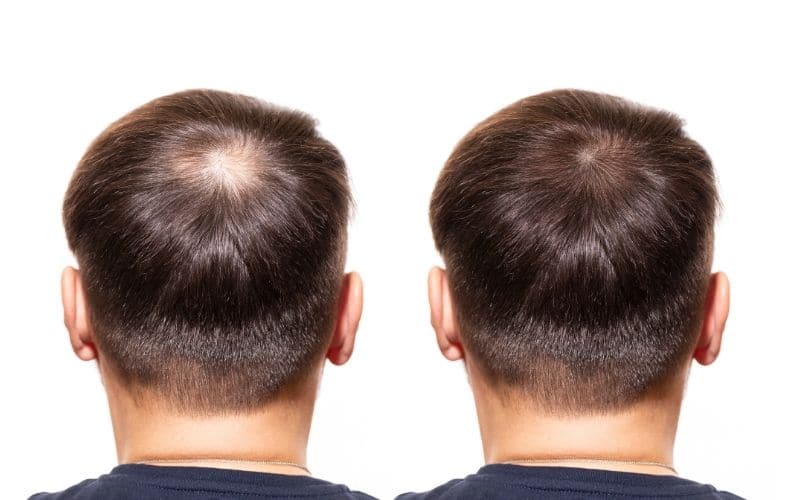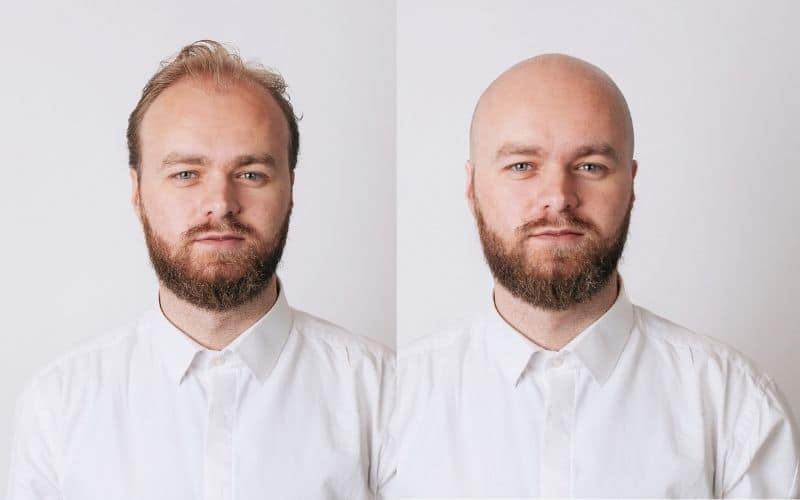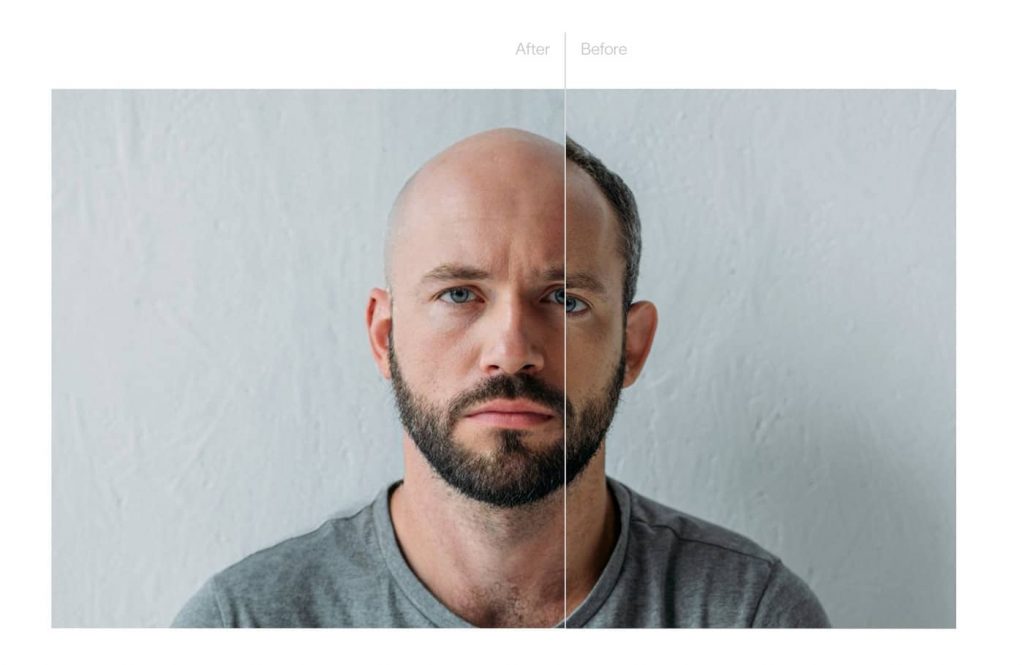So you’ve noticed a patch of hair that doesn’t quite look right and you’re not sure whether it’s a cowlick or balding? We’re here to help you tell them apart and explain the major differences.
What is the difference between cowlicks and bald patches?
There are many different ways to tell if you’re going bald. Bald patches are an obvious sign, but often cowlicks can be mistaken for them.
The best way to describe the difference is by explaining that cowlicks are associated with the hair growth pattern whereas balding represents hair loss in that area.
Cowlick on Hairline
For example, a cowlick is a patch of hair that is falling in a different direction to the hair around it. This action causes skin underneath to be partially exposed due to the sudden change in hair pattern.
Our hair get’s a little confused here in which way it should fall but it unfortunately can’t be fixed. Hair follicles are locked in place before we are even born.
The name 'cowlick' comes from the pattern that shows on baby calves fur once a cow mother has licked their newborn clean.
The longer your hair is, the harder it will be to detect a cowlick as there is more hair uninfluenced by the root to cover it. Cowlicks are very common among both women and men, but women often have longer hair to cover them.
Cowlicks can grow on hairlines at the front or back of your head. They are most commonly found around the crown of the head, which is exactly the same spot a lot of bald spots form.
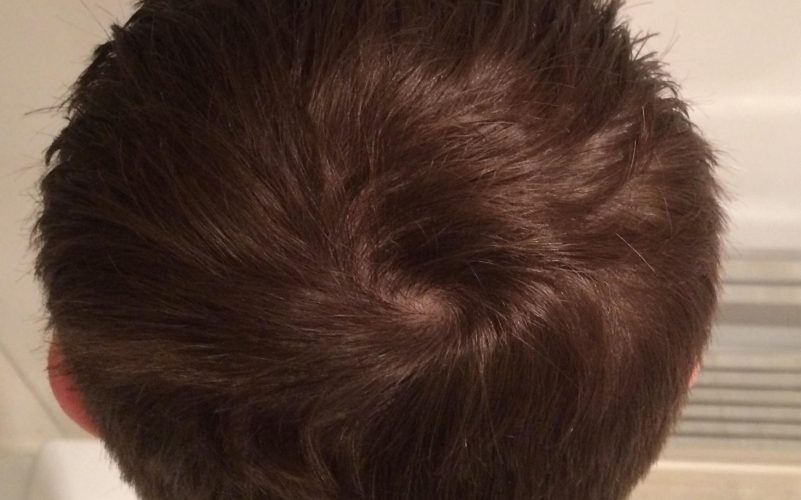
Bald spots
Balding is different as there will be a lot less or even no signs of hair follicles present in the area of exposed skin. If the area of exposed skin is quite small and only in the ‘centre’ of the directional hair pattern, then it is most likely just a cowlick.
When there is a larger area of noticeably thinner hair, this could be referred to as male pattern baldness. This occurs when your hair follicles start to shrink, causing thinner and thinner hair until it eventually just stops growing all together.
There is no cure for this, but there are some treatments available. Beware of scams, or ‘miracle cures’ and make sure to do your research before starting any treatments. If you do plan on going down that route, make sure to start at the first signs of balding as once your hair follicles are gone, they cannot be brought back.
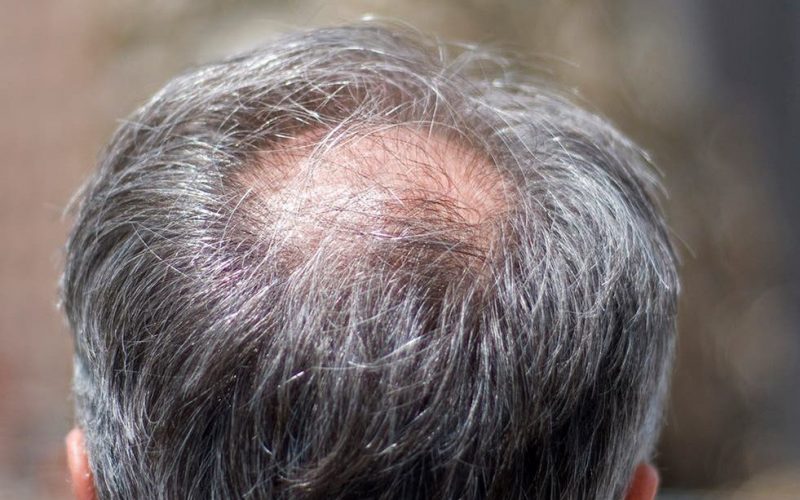
How to Spot The Difference?
Check the rest of your hair. If other parts of your hair are thinning or you notice a receding hair line then that should be a big sign that you are in fact balding.
Another thing to look out for is if your hair is shedding more than usual. We naturally lose about 50-100 strands a day but losing more than that could be a sign of balding. To track this, check your pillow in the morning or notice how much falls out in the shower.
Redness and itching can also occur due to DHT sensitivity (the hormone responsible for hair loss) in the areas experiencing significant hair loss.
Family history of baldness is another tell tale sign you may be along for the ride as well.
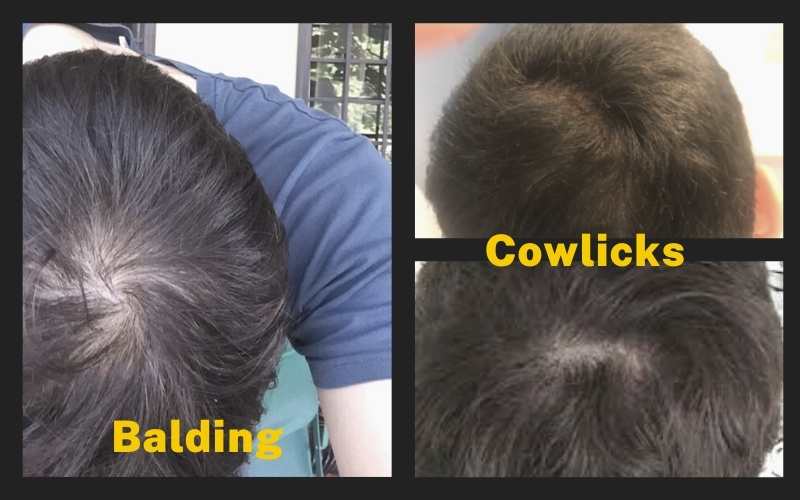
If it is just a cowlick, you should still see hair follicles at the root, even if they are sharply directed away from the area. If there is no thinning on other parts of your head than it is likely to be just a natural cowlick.
Another thing to gage is how long your patch of hair has looked like this. If it’s on the back of your head, maybe it’s always been like that and you may have never noticed? Ask close family and friends if they recognise it or find some old photos. If it’s always been there then it’s most likely not a balding issue.
So… is it a Cowlick or Bald Spot?
Whichever it is, we hope we helped to clear that up for you. If it’s just a cowlick, congrats! We wish you well on your hairy adventures through life. If you’re balding, we are here for you with plenty of resources to get you started on your bald journey.
Find out what you would look like bald or join the Bald Company.

